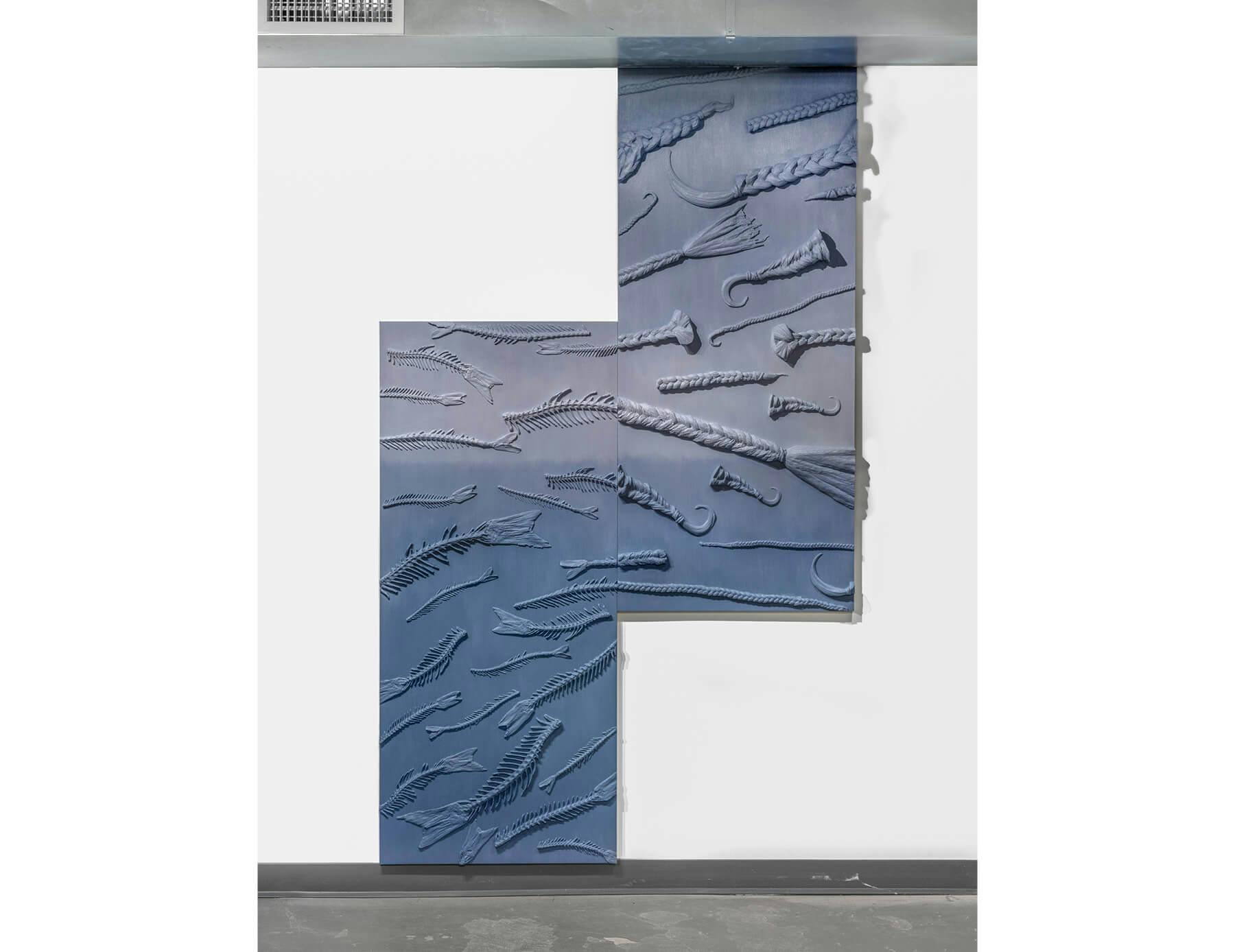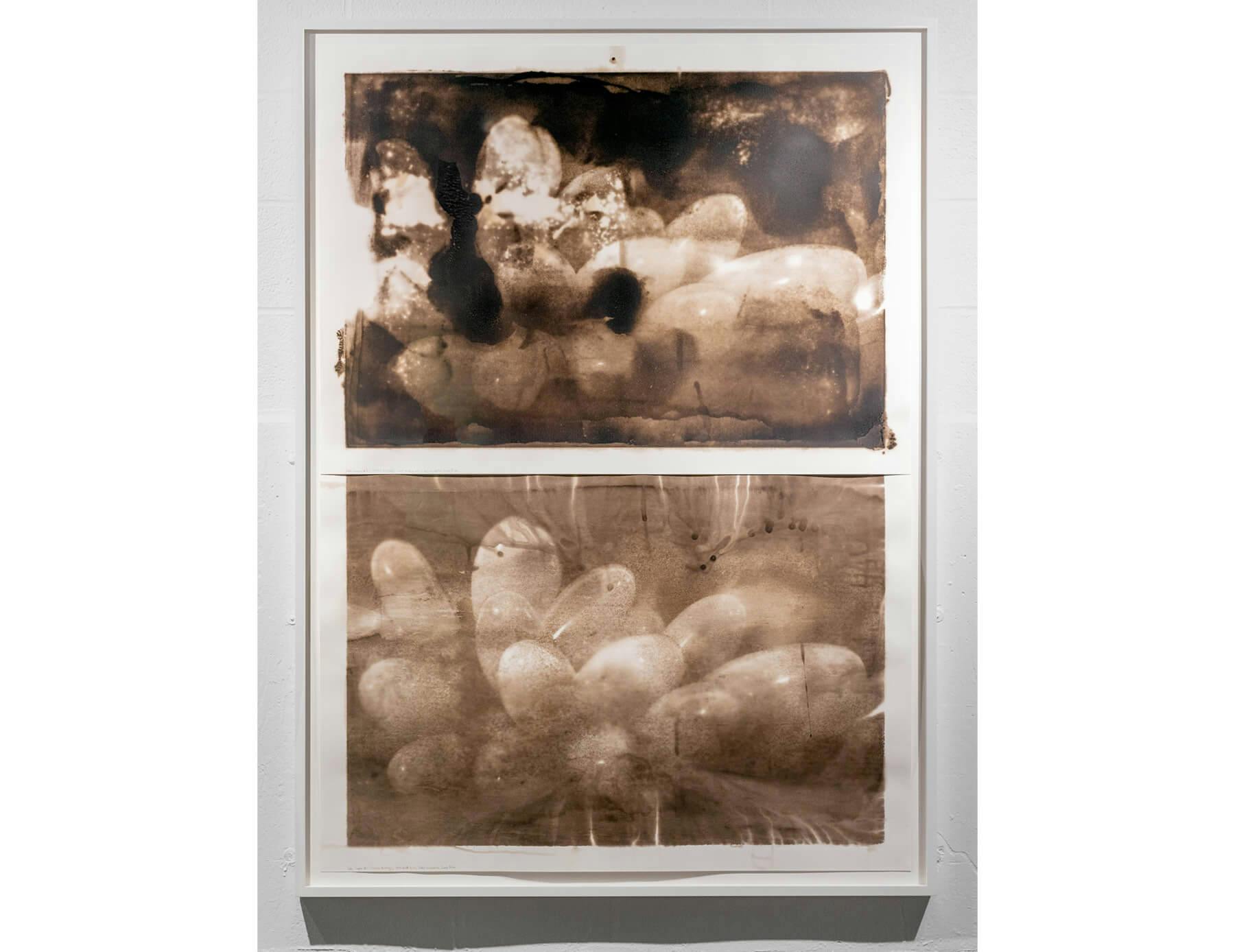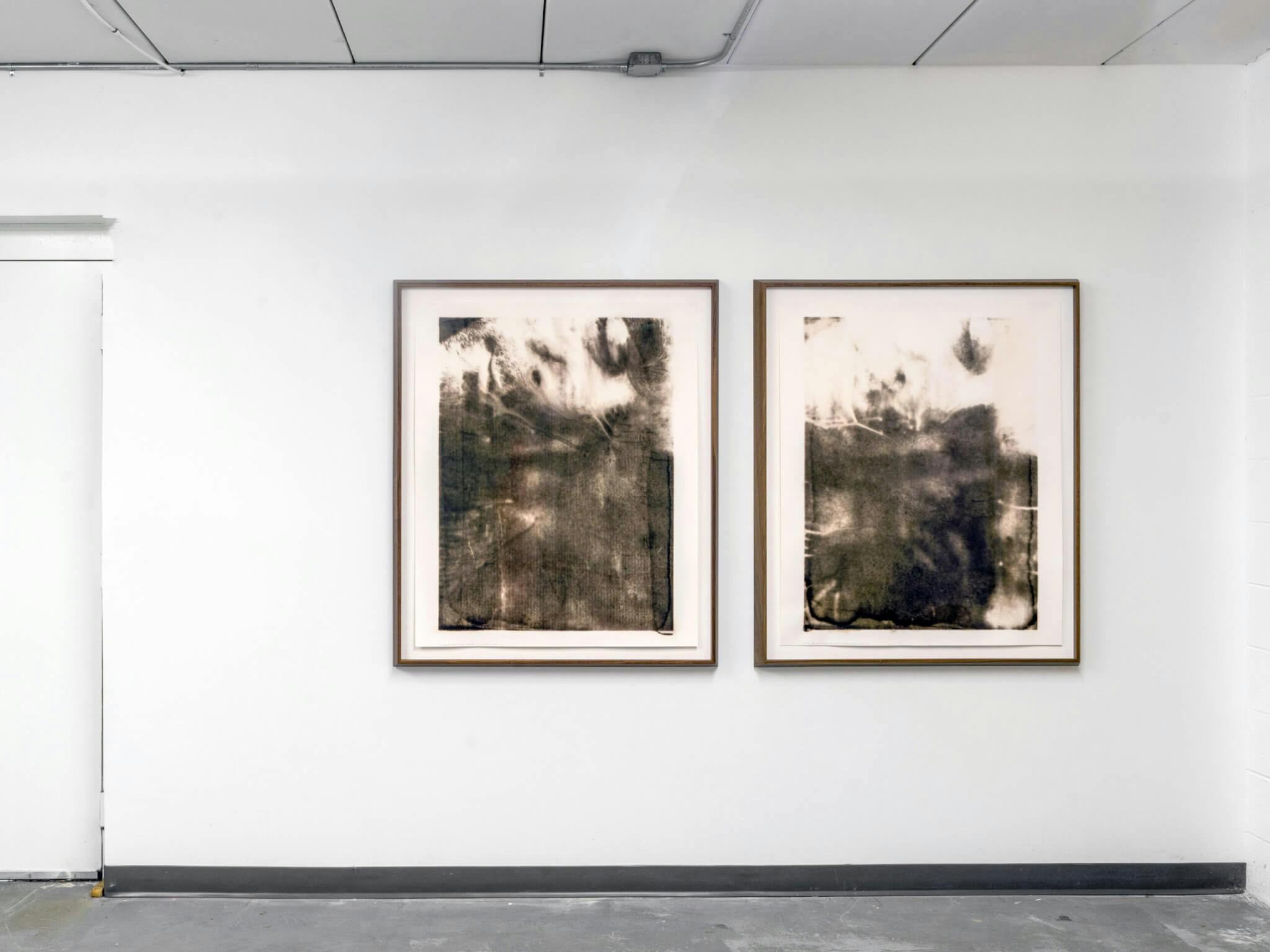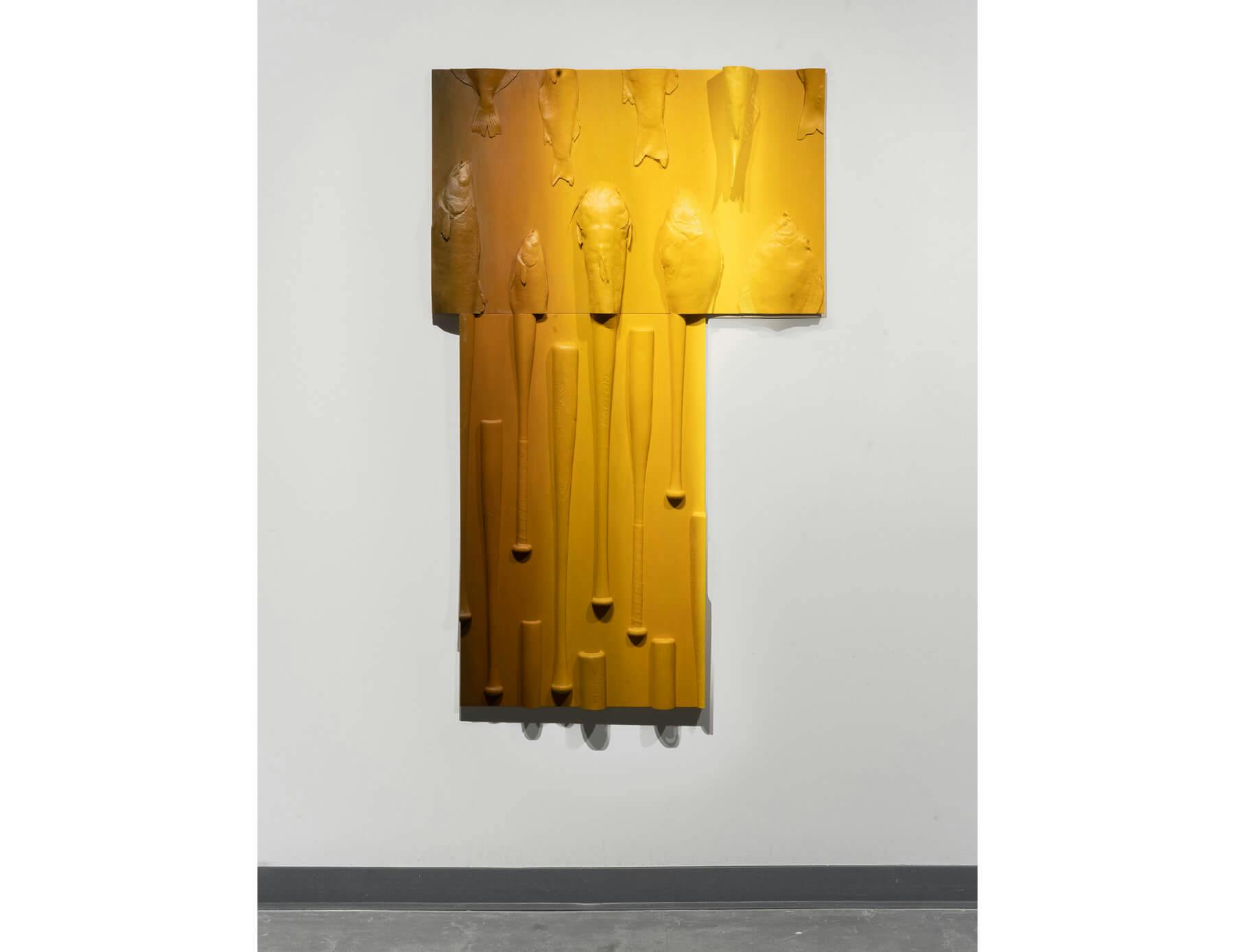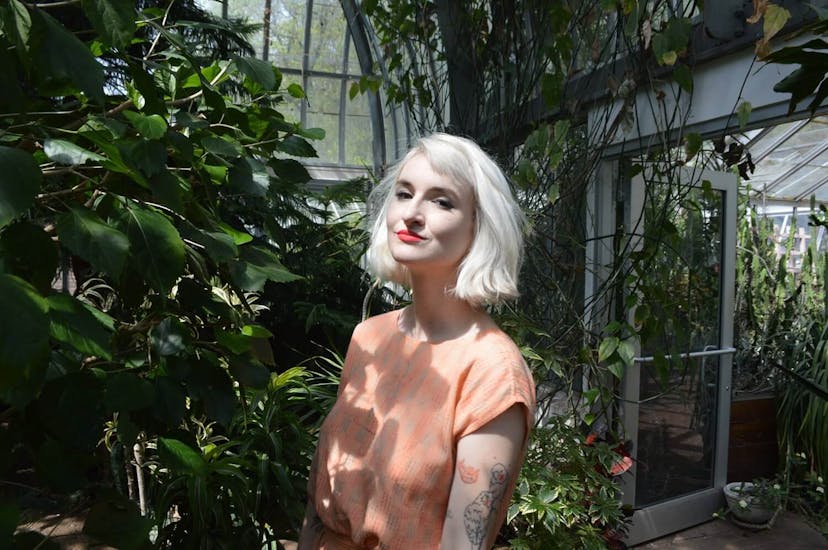“Dead or Dormant,” a monographic show highlighting Lucy Kim, is the latest exhibition on view in Kate McNamara’s delightful contemporary arts space, ODD-KIN. Situated in East Providence and established just over one year ago, ODD-KIN has hosted some thrilling, colorful group shows exploring themes like materiality, animate objects, artifice, nature, and play—which also happen to inform Lucy Kim’s work in the gallery’s debut solo feature. I have visited this space for each exhibition’s opening, and the excitement and charm of ODD-KIN is palpable. On the occasion of the “Dead or Dormant” opening celebration, attendees from Boston, Providence, and anywhere within these cities’ orbits brought a communal, collective sense of enthusiasm and support for both Kim’s engaging artwork and McNamara’s fresh curatorial practice.
In her introductory text for “Dead or Dormant,” artist Lucy Kim says her “primary interest is in how we see what we see” and notes she is especially invested in exploring “the prevalent notion that seeing is knowing.” In other words, Kim’s work investigates how, when, and why “seeing is believing,” an adage attested to by the primacy of visual observation in both formal and informal settings, from the scientific method to surveillance to viral Internet content. But the conditions of seeing and believing are also embodied, material conditions, shaped by the physical and emotional experience of the seer, the believer. In “Dead or Dormant,” Kim heightens our attunement to the slippery, unreliable, and ever-changing nature of categories like sight, knowledge, and belief. The exhibition’s setting, for this writer, already carries certain emotional associations—like pleasant memories of artists, art lovers, creatives, writers, and their children lounging, walking, and prancing throughout ODD-KIN’s galleries, or warm thoughts about artworks I’ve previously enjoyed in the space. These memories and experiences tinge my perception, my sight, so I’m already primed to believe.
The exhibition space is relatively small and divided into two rooms. The entry room is the smaller of the two and houses a tender diptych of two prints titled Jon Sleeping. The second room includes several more prints of jade grapes and orchid pods, a pair of sculptural paintings from Kim’s Homomorphy series, and a time-lapse, single-channel video on a standalone wall. Moving through these rooms, I remember reading Laura U. Marks, who writes: “That vision should have ceased to be understood as a form of contact and instead become disembodied and adequated with knowledge itself is a function of European post-Enlightenment rationality. But an ancient and intercultural undercurrent of haptic visuality continues to inform an understanding of vision as embodied and material.” This sense of an embodied, material understanding of vision pulses throughout “Dead or Dormant,” where encounters with Lucy Kim’s textural, suggestive work feel like intimate exchanges between the viewer and living materials.
McNamara’s curatorial vision plays into viewer experience too: The works on view come from two distinct strands of Kim’s practice, but each independently scintillates with the visual and sensory as an experience of “touching, not mastering.” McNamara’s placement of Kim’s foggy, dreamlike photos in conversation with the trompe l’oeil sculptural reliefs signals to visitors that vision is not what it seems. A fabulously personal mist permeates the air as the artist’s subjectivity surfaces in the gallery’s didactic texts as well as the artworks’ contents.
In the introductory text, Kim explains the process behind her photographic prints, which are “made with live genetically modified bacteria that produce eumelanin, the black and brown pigment largely responsible for human skin, hair, and eye color, and signifies race.” This process was developed during Kim’s long-term residency with the Broad Institute, where she utilized a strain of modified E. coli developed by Guillermo Gosset at UNAM in Mexico that turned the cells into eumelanin-producing bacteria. With this material, Kim “screen-print[s] live cells in the form of an image directly onto the paper,” her work becoming visible “as the cells make melanin,” reproducing, evolving, and distorting. The effect is ooze-like, a soak-stain, tactile, surreal, and palpable; these are living images.
The images these live cells represent are just as potent and charged as the material used to produce them. A diptych of prints show jade carved to look like grapes, creating a sort of mise en abyme, as living organisms (bacteria) represent artificial constructions (carved jade) that represent living organisms (grapes). Elsewhere, a diptych of prints titled Jon Sleeping #1 and Jon Sleeping #2 depicts the artist’s spouse in deep sleep. Sleep is the proverbial cousin of death (is Jon dead or dormant?), but these prints teem with residue of bacterial life and are indexical of shared conjugal life. I think again of Laura Marks: “It is hard to look closely at a lover’s skin with optical vision.”
Kim’s sculptural paintings are kind of like looking at a lover’s skin too, in the sense that looking at braids, fish bones, fish, and bats will certainly elicit any number of personal associations, memories, and feelings for viewers. These playful combines from Kim’s Homomorphy series fuse together panels coated with cast forms with similar appearances but arbitrary relationships. The sculptural paintings readily establish the ways in which context, proximity, and placement dictate visual experience: fishbones and braids look and feel different next to each other than either archetype would look alone. The sculptural paintings also bring the fuzziness of culturally enforced binaries to the forefront, such as nature versus artifice, organic versus inorganic, and living versus nonliving. If fish and baseball bats are different, wherein do those differences lie? Textural and evocative upheavals of the taxonomic, the Homomorphy works again ask for an embodied, material understanding of vision.
Ancient Greek scientists explained vision primarily through two theories: emission theory and intromission theory. Proponents of emission theory believed that our eyes cast rays of light out into the world, which would then fall upon objects and illuminate them (and we would “see” them). Advocates for intromission argued that objects, external to the human body, emit their own rays of light, which then enter our eyes to form visual perception (and we would receive “sight”). Although the latter theory is closer to how we conceive of optics today, both groups considered the eye an internal flame interacting with light-as-fire to construct an optic and haptic visual experience.
I like thinking of the many material actants in Kim’s “Dead or Dormant” as agents in visual interplay with my own personal experience of sight, especially within the context of an emergent contemporary art space in Providence. Kim’s materials buzz with energy, even when “dead or dormant,” upending simple conceptions of the inert. The works emanate feeling, encouraging a bodily relationship between the viewer and the artwork, while the energetic curatorial force behind the space provides another layer of subjectivity. Though viewers and art objects alike are fundamentally unreliable, given to whims, changes, and metamorphoses, this flux is a generative basis for speculation, imagination, and embodied knowledge.
“Dead or Dormant” is on view at ODD-KIN (89 Valley Street, East Providence, RI 02914) through July 8, 2023. A closing party will be held on July 8.
Updated June 15, 2023: An earlier version of this article mistakenly attributed the development of the E. coli cells.
